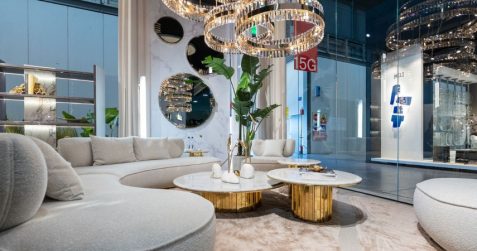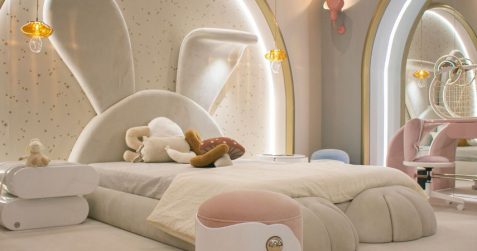

Salone del Mobile 2024 revealed itself as one of the greatest design tradeshows of the year so far, as expected, and it is still a reference for all interior design lovers and professionals around the world. This annual event is renowned for setting trends, inspiring creativity, and bringing together […]

The enchanting world of furniture for kids took center stage at Salone del Mobile 2024, a prestigious international furniture fair held in Milan. Amidst the grandeur of contemporary design and innovation, the spotlight shone brightly on a brand that redefines comfort and style for the little ones. Let’s have […]
Peck is the newest restaurant that opened in Milan’s CityLife Shopping District. This new establishment was designed by Milanese architecture and design practice Vudafieri – Saverino Partners. Today we’re having a look at this new Milan restaurant.


This space occupies a 3,230-square-foot area inside which you can find a restaurant, wine shop, deli, and a cocktail bar. The interior decoration was made with the intention of recalling Milan during the post-war period. That can be seen especially in the establishment’s flooring which is reminiscent of historic Milanese stone as well as in its false wooden ceiling which is an allusion to the Villa Necchi Campiglio by Milanese architect Piero Portaluppi.

But wait, there are many more elements clearly referencing Milanese history. There are also the vertical support posts holding up the shelves which allude to the form of Torre Velasca built by the BBPR, as well as the decorative lamps spread all throughout the interior which is based in an esthetic tradition of Milanese buildings, which at the same time manages to be modernist, quite surprisingly.


The customers will be met with 50 seats across the delicatessen and restaurant as well as 20 additional spots at the bars. There’s also the large counter that welcomes the guests and also gives them the possibility of eating while directly sitting at this very same counter.

This restaurant is a good example that it’s possible to reinterpret old materials such as wood, black iron, and copper and give them a contemporary touch while maintaining some of the place’s original essence. Truly an example of good Milanese design.